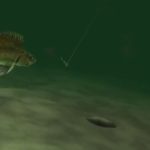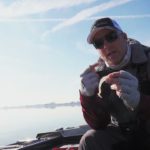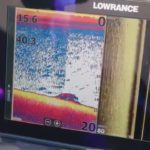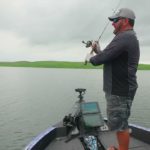Tips for Successful Open Water Trolling

By open water trolling, I mean trolling where there is no structure. Depending on the depth of the body of water, open water trolling might mean the basin of a shallow lake or the suspended fish of a deep glacial lake. What it does mean is that you really need to rely on your electronics to find those basin or suspended fish. Contrary to what we used to believe, walleyes are not necessarily bottom hugging fish. Instead, we need to realize that those arcs we see suspended at 15 feet in 30 foot of water might well be walleyes.
Open water trolling works for both spinners and crankbaits. However, I've made a couple of changes when it comes to using spinners. First, I make over the typical pre-tied spinners to lengthen them from the typical 30" to 48 to 60". I also put a treble hook on the rear for better hook ups. However, the treble hook is only good for open water because it gets snagged up easily when fishing structure. This year at Lake Erie, we were fishing in 50' of water and found the walleyes suspended 30' down. I was going very slow and sometimes with the big waves, I even ran my kicker motor in reverse. However, I was also having trouble getting fish hooked. So, I went with two #6 treble hooks on each spinner and my hook-up rate increased to almost 100 percent. My theory on the #6 treble hooks was based on using crankbaits. We know fish bite on Frenzy #9s with size 4 and 6 hooks, so why use small treble hooks on spinners? I firmly believe that fish are attracted by the spinner and then focus on the bait, not the hook size. If you are fishing spinners on a rocky or gravel bottom and want to go to the treble hooks, but are afraid to because of the bottom, try using one and maybe two in-line Lindy floats to help the bait stay up off the bottom.
When fishing suspended and open water walleyes (this is especially true if fishing for big fish), always try larger spinners. I prefer Colorado blades and will go as large as #7s. When fishing an area where the typical fish will weigh 1-3 pounds, I will probably stick with 3/s or maybe 4s. Early in the spring when fishing my local Iowa waters, I will at times even go smaller to a #1.
I have also discovered that it is possible to run both spinners and crankbaits at the same time. I will slow down somewhat to between .8 and 1.5 mph, but I am giving the walleyes the best of both worlds: live bait , Power bait and a wiggling crankbait. This can be especially effective when a cold front comes through and they don't hit the crankbait. By slowing down and having the spinner and live bait rig, we can capitalize on those lethargic, cold front fish
It is also important to always run at least one bait high in the water column. This becomes very critical as the summer progresses because there can be as many fish caught suspended as there will be on the bottom. Many times we will run baits within two feet of the surface.
The bottom line in this whole presentation is to adjust your speed. I feel comfortable at pulling spinners at 1.5 mph which will also work for pulling crankbaits. Sometimes, this speed is adjusted for us by wave action. How many times have you gotten a strike on the surge or the ebb of a wave? How many times have you gotten a strike on a turn? The reason for this? It was a change from the norm, a subtle speed change that triggered a bite. So, there you go. Some options to help you become a confident open water troller.





